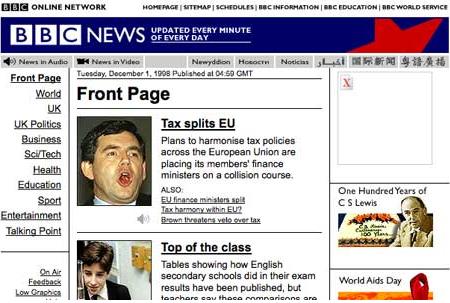 When James Surowiecki coined the phrase ‘The Wisdom of Crowds’ for his 2004 book, it was a play on a 19th century work Extraordinary Popular Delusions and the Madness of Crowds by Charles MacKay.
When James Surowiecki coined the phrase ‘The Wisdom of Crowds’ for his 2004 book, it was a play on a 19th century work Extraordinary Popular Delusions and the Madness of Crowds by Charles MacKay.
Well this weekend the madness returned, and not just inside the City of Manchester Stadium.
Surowiecki argument – “the many are smarter than the few” – is a theme that’s been taken up by others, most notably Jeff Howe in his book Crowdsourcing, and applied in a variety of ways in the digital space.
One of the best newspaper adaptations of the crowdsourcing idea is player ratings – rather than rely on the opinion of one sports reporter, an irregular watcher of the players on view, source the opinions of the fans.
The aggregate marks out of 10 you’ll find on the Daily Telegraph ratings application are invariably a better guide to the true worth of a footballer’s 90 minutes than those from your correspondent of choice.
Counterintuitive, maybe, but the football fanatic is also the football realist and knows more than most when the talent is failing to deliver. It’s the media that often has the blinkers on when it comes to Gerrard, Rooney, Lampard, Fabregas et al.
But once in a while the crowd gets it wrong – and the correspondent gets it right.
Take Emmanuel Adebayor’s performance on Saturday when the Manchester City striker faced his former club.
Fuelled by festering animosity towards the Arsenal fans and some of his former colleagues, Adebayor was an effective footballer (one goal from one opportunity) but an ineffective diplomat (inappropriate, near riot-inducing goal celebration and a boot, seemingly put there deliberately, into a ex-teammates face).
On the football alone, the player deserved a strong rating. And that’s what he got from the writers – 7 out of 10 in the Sun and the Guardian; 8 out of 10 in the Daily Mail, the Sunday Times and The Times.
And in the Telegraph’s crowdsourced player ratings? 5.82 at the time of posting. In other words, the worst Manchester City player on the pitch. Surely not? A case of Arsenal fans getting some digital retaliation, perhaps.
Of course these ratings are subjective but in this particular case the wisdom of football writers does seem nearer the mark than the madness of football fans.
Just as the custodians of Wikipedia put editing restrictions on pages covering the Middle East, perhaps the Telegraph should re-consider how it deals with some footballing conflict zones.
Related:
– How The Guardian’s Crowdsourcing Experiment Ran Out Of Steam
– Crowdsourcing 1920s-Style
– BBC Goes Crowdsourcing To Save The NHS



 When James Surowiecki coined the phrase ‘The Wisdom of Crowds’ for
When James Surowiecki coined the phrase ‘The Wisdom of Crowds’ for  It was one of the more entertaining tit-for-tats of the week. The
It was one of the more entertaining tit-for-tats of the week. The 


